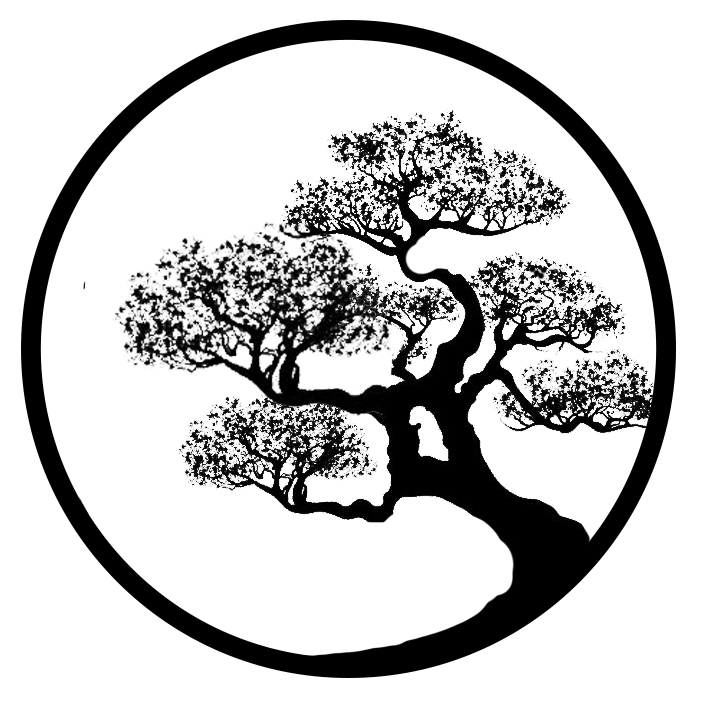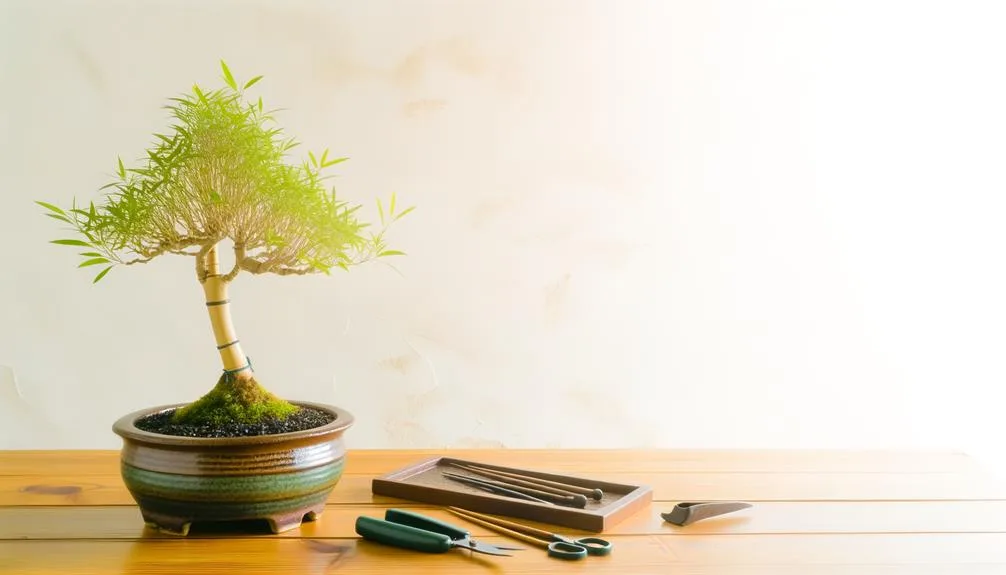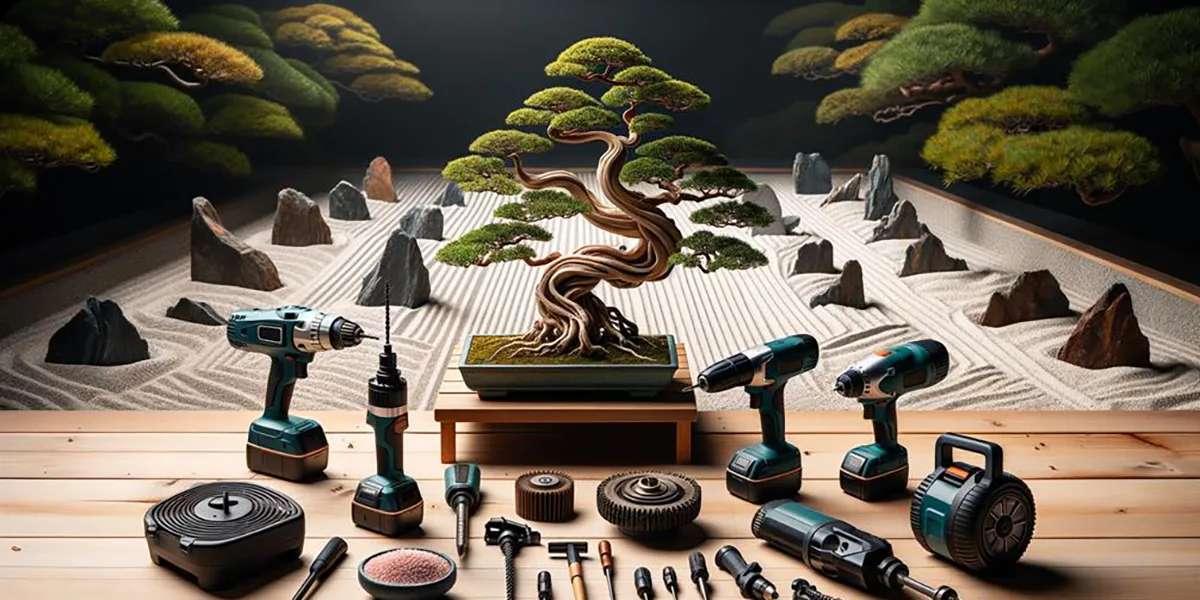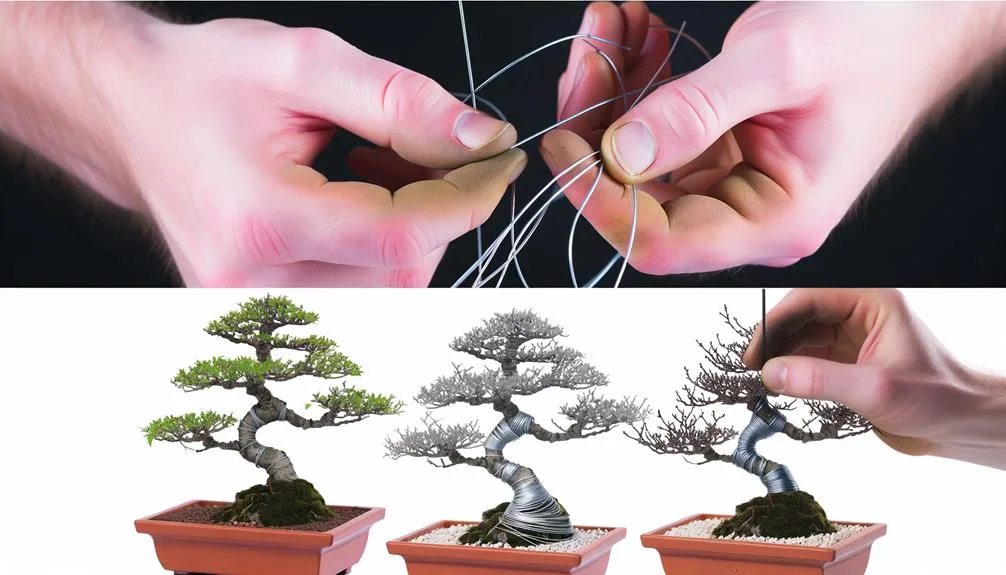Bonsai pests and diseases can seriously harm your beloved miniature trees. As a bonsai lover, recognizing and managing these common problems is crucial. This comprehensive guide will assist you in identifying and treating these issues before they escalate. By being vigilant and proactive, you can maintain the health and vitality of your bonsai collection.
Bonsai Pests
Bonsai pests, including spider mites, aphids, mealybugs, scales, and slugs or snails, pose a significant threat to the health and aesthetics of the trees. These pests, by feeding on the leaves and stems, can seriously damage the bonsai trees. Through their sap-sucking habits, they cause the foliage to wilt, stunt, or develop spots, thus wreaking havoc on your bonsai
Spider Mites
Spider mites are tiny arachnids that infest the underside of bonsai leaves. They feed on the sap, causing yellowing and spotting of the foliage. If left untreated, spider mite infestations can weaken the bonsai and lead to defoliation.
Aphids
Aphids are small insects that feed on the sap of bonsai trees. They can multiply rapidly and cause significant damage to the leaves and stems. Aphid infestations are often characterized by curling or distorted leaves and the presence of sticky honeydew.
Mealybugs
Mealybugs are soft-bodied insects that pose a significant threat to the health and growth of bonsai trees. These pests are prevalent in indoor bonsai collections, making them one of the primary pests to look for when maintaining these miniature trees. Hidden within the bark and foliage, Mealybugs are often discovered in clusters around your bonsai, making them quite challenging to eradicate.
These pests can cause a series of damage to the bonsai trees, leading to stunted growth and leaf yellowing. Additionally, Mealybugs secrete a white, powdery substance that further deteriorates the health of the tree. Therefore, a keen eye for these pests is crucial to keep your tree healthy. Regular checks and appropriate treatment methods can help control and prevent Mealybug infestation, thus ensuring the longevity and aesthetic appeal of your bonsai trees.
Scales
Scale insects are tiny, stationary pests that firmly attach themselves to the bark of bonsai trees, making them difficult to remove. These insects are known for their peculiar habit of feeding off the sap of these miniature trees. As they do so, they not only drain the bonsai of its essential nutrients but also cause multiple visible damages to the plant.
The symptoms of scale insect infestation include yellowing leaves, leaf drop, and the development of sooty mold. Yellowing leaves are often the first signs of an infestation, indicating that the tree is not receiving enough nutrients due to the insects feeding off its sap. The leaf drop issue is another result of the bonsai tree’s weakened state, as the tree is unable to support the weight and maintenance of its leaves.
Moreover, scale insects excrete honeydew, a sweet, sticky substance that attracts mold, leading to the development of a sooty, black fungus on the bonsai tree. This not only mars the aesthetic appearance of the bonsai but can also hinder its growth and photosynthesis process.
Scale infestations are particularly common amongst certain species of bonsai trees, such as juniper, pine, and holly. These species seem to attract these pests more than others, making them more susceptible to infestations. For those who nurture these bonsai species, it is crucial to be aware of the potential threat of scale insects and monitor the health of their trees regularly.
Slugs or Snails
Slugs or snails are often considered as significant nuisances in outdoor bonsai collections. These mollusks are notorious for their destructive feeding habits which predominantly target the leaves of your bonsai, leading to significant damage. They are especially attracted to the lush green leaves, their primary source of sustenance.
These unwanted guests feed voraciously, leaving behind irregular holes and a slimy trail which is their trademark sign of infestation. Their presence becomes even more prominent and evident during damp or rainy periods when the environment is most hospitable for them.
In addition to the direct damage they cause, slugs and snails also contribute indirectly to the deterioration of bonsai health. They often serve as carriers for various fungal diseases which can severely affect bonsai. The holes they create in the leaves are perfect entry points for these diseases and pests, making your bonsai tree more susceptible to infection.
Furthermore, the slimy residue they leave around your bonsai tree can also serve as a breeding ground for other harmful organisms. Thus, the impact of slugs and snails extends beyond mere physical damage, posing a substantial threat to the overall health and well-being of your beloved bonsai.
Treating Common Bonsai Pests
Methods of Control
There are several methods of controlling bonsai pests, depending on the severity of the infestation. Pruning affected leaves and stems, manually removing pests, and applying insecticides are common approaches. It is important to select insecticides specifically formulated for use on bonsai trees and to follow the instructions carefully to avoid harming the tree.
Preventative Measures
Preventing bonsai pest infestations is key to maintaining the health of your tree. Regularly inspect your bonsai for signs of pests, especially around the underside of the leaves and the bark. Additionally, maintaining a clean growing environment, properly watering your tree, and promoting good airflow can help minimize the risk of infestation.
Common Bonsai Diseases: Black Spot and Mildew
In addition to pests, bonsai trees are susceptible to various diseases. Common bonsai diseases include black spot, mildew, and other fungal infections. These diseases can weaken the bonsai, cause defoliation, and potentially lead to the death of the tree if left untreated.
Black Spot
Black spot is a fungal infection characterized by black or brown spots on the leaves. Over time, the infected leaves may yellow and drop prematurely. To treat black spot fungus, remove and dispose of infected leaves and ensure good airflow around the bonsai.
Mildew
Mildew is a fungal infection that appears as a white, powdery coating on the leaves and stems of the bonsai. It can inhibit the tree’s ability to photosynthesize, leading to weak growth and wilted foliage. To eradicate mildew, prune affected branches and apply a fungicide specifically formulated for bonsai trees.
Other Fungal Infections
Bonsai trees can also be affected by various other fungal infections such as root rot and powdery mildew. These infections can cause the bonsai’s leaves and stems to wither and die if left untreated. It is important to promptly identify and treat fungal infections to prevent further damage and preserve the health of your tree.
Treating Bonsai Diseases
Fungal Infection Treatments
Applying fungicides specifically formulated for bonsai trees can be effective when treating bonsai diseases. Additionally, removing and disposing of infected plant material, improving ventilation, and adjusting watering practices can help combat fungal infections and promote the recovery of your bonsai.
Bonsai trees, like all living organisms, can be susceptible to diseases, particularly those caused by fungi. One of the effective ways to handle these is by using fungicides that are specially designed for bonsai trees.
Further actions you can take include getting rid of any infected parts of the plant and disposing of them properly. This not only prevents the disease from spreading but also aids in the recovery of your bonsai.
Improving the ventilation around your bonsai tree is another measure to consider. Fungi thrive in damp, poorly ventilated environments, so increasing air circulation can help keep them at bay.
Moreover, your watering practices can have a significant impact on the health of your bonsai tree. Overwatering can lead to waterlogged soils, which can foster the growth of fungi. By adjusting these practices – watering only when necessary and ensuring proper drainage – you can create an environment that is less conducive to fungal growth and more conducive to the health and recovery of your bonsai tree.
Remember, the key to a healthy bonsai tree is not just in how you respond to diseases, but in the preventative measures you take. By using the correct fungicides, removing infected material, improving ventilation, and adjusting watering practices, you can keep your bonsai tree healthy and thriving.
As the saying goes, “An ounce of prevention is worth a pound of cure.” This couldn’t be more true when it comes to the care and maintenance of your bonsai tree. So, stay vigilant and proactive to ensure your bonsai tree continues to be a source of beauty and tranquility in your space.
Preventing Disease Spread
Preventing the spread of bonsai diseases is essential to maintain the health of your entire collection. Regularly disinfecting tools, ensuring proper drainage, and keeping your bonsai’s environment clean are crucial preventive measures. Avoiding overwatering and properly caring for the root system of your trees can also help prevent root rot and other fungal infections.
Bonsai Care Recap: Keeping Your Bonsai Healthy
The art of bonsai is a delicate and rewarding process, requiring consistent care and attention. Keeping your bonsai tree healthy is not just about watering and providing light, but also about preventing and controlling pests that can weaken the tree.
A variety of pests, from tiny insects to fungi, can cause significant damage to the leaves and stems of bonsai trees. Regularly inspecting your tree, particularly the underside of leaves, can help identify these pests early and prevent them from spreading to other plants and trees in your collection. When you notice common pests, take immediate action and treat the tree with a fungicide to control the infestation.
The signs of an unhealthy bonsai may range from yellowing of the leaves, brown or black spots around the edges of leaves, to a powdery substance on the surface of leaves and stems. Sap from your bonsai leaves or stems may also indicate an issue. These symptoms can be caused by a variety of factors, including pests, diseases, or improper care.
Bonsai enthusiasts should be particularly vigilant about the health of the leaves of bonsai trees, as they are often the first to show signs of distress. The roots of the tree are equally important as they absorb the essential nutrients needed for the tree’s growth. Dead or diseased branches should be removed promptly to prevent further spread of the disease and to maintain the overall health of the entire tree.
Maintaining a healthy environment for your bonsai includes providing the necessary water, light, and nutrients for optimal growth. To properly water your bonsai, avoid overwatering and ensure the soil is well-drained to prevent root rot. The leaves of your bonsai tree need adequate light for photosynthesis, but avoid direct sunlight which can cause the leaves to turn yellow or burn.
Provide nutrients through a balanced fertilizer used for bonsai to promote healthy growth. Avoid overcrowding your bonsai as it can create a conducive environment for pests and diseases. Bonsai enthusiasts often seek professional guidance and stay informed about bonsai care techniques to ensure the long-term health and beauty of their bonsai trees. Welcome to the rewarding world of bonsai, where attention to detail and regular care can lead to a lifetime of enjoyment.
Conclusion
By familiarizing yourself with common bonsai pests and diseases, you can take proactive measures to prevent and treat issues that may affect your trees. Regular inspections, proper care, and prompt action can help keep your bonsai collection healthy and thriving. Remember, a healthy bonsai is a beautiful bonsai!




